Building a Collection #70
Ballade no. 1 in G minor, Op. 23
Frédéric Chopin
________________
Thank you for stopping here to read Building a Collection, a series which is part of my regular newsletter Building a Classical Music Collection. We have reached #70 on the list of the 250 greatest classical music works of all time. We encounter Frédéric Chopin for the second time, arguably the greatest of all composers for the piano, and one of his most treasured and popular works, the Ballade no. 1 in G minor, Op. 23. Where have you heard it? It is quite possible you have heard the Ballade no. 1 in the 2002 Roman Polanski film The Pianist starring Adrian Brody, in which the piece plays a prominent role. At under 10 minutes on average, it is also a favorite for many virtuoso pianists to play live for recitals or to record. It is personally one of my favorites as well, and so I come to this entry with some biases toward certain recordings. But we will get to that in a bit.
Frédéric Chopin
Frédéric Chopin was born in 1810 in Zelazowa, Poland and died in 1849 in Paris, France. Chopin is one of the most important and most original composers of the Romantic period. Chopin wrote almost exclusively for the piano, with only a few exceptions. But the depth and range of expression Chopin was able to draw from the piano remains unsurpassed in the history of music, and his legacy both as a pianist and composer is undeniable.
Chopin’s father was French, and his mother was Polish. He was born, raised, and educated in Poland and even though he lived most of his adult life in France, Chopin always fiercely considered himself Polish. He was raised for many years in Warsaw, but in the summers the family would go to the countryside, where the young Chopin heard Polish folk songs. These were to form the basis for many of his later compositions.
By the age of 8, Chopin was considered a child prodigy. He soon performed in private salons, and even began composing his own music for piano. He gave his first public recital in Vienna in 1829. After becoming a bit more well-known, he felt constrained by what he considered the backward cultural conventions of Poland, and by the ongoing political strife with Russia, and felt the need to move elsewhere to be appreciated. In 1832, he settled in Paris. Once there, he made a living primarily by being a private piano teacher to the wealthy class. On occasion, he would travel to perform in Germany, Austria, or France. Remarkably though, it is reported that Chopin gave less than 30 public performances during his entire lifetime. He grew to very much dislike performing in public and being on stage for large audiences, and increasingly he would only perform in private salons for friends and acquaintances. Chopin would compose and teach mostly, and his income consisted of teaching piano lessons and publishing his compositions. After establishing himself professionally in Paris, Chopin often longed to return to Poland, but unfortunately he no longer had the option to return due to the political situation in his homeland.
Chopin wrote many, many pieces for the piano. His pieces include preludes, waltzes, etudes, nocturnes, polonaises, mazurkas, scherzos, ballades, two sonatas, two piano concertos, and some other various pieces. Considering the period he composed in classical music history, Chopin’s music is uniquely non-German sounding and has its own sound world. Most pieces he wrote for himself to play, but he also published the scores. Some characteristics of Chopin’s music include grace, wit, intimacy, beauty, subtlety, power, and grandeur. Although many of Chopin’s pieces seem simple, they are deceptively difficult to play and tend to be technically demanding.
In Paris, Chopin moved in aristocratic circles socially. He was a young man of impeccable taste, and was concerned with matters such as clothes, style, and appearance. Along with meeting and knowing many famous composers of the day, Chopin also became friends with the writer Honore de Balzac, novelist Victor Hugo, and artist Eugène Delacroix. From accounts we have, Chopin was often witty and charming, but could also be malicious and unpleasant. Even though he is considered to be a Romantic period composer, Chopin disliked romanticism because of what he saw as its excesses. In fact, although he became friendly with the composer Franz Liszt, he considered Liszt’s music and performance antics to be vulgar. He disliked fellow composer Robert Schumann’s music, and did not comment on the music of his friends Felix Mendelssohn and Hector Berlioz. Chopin felt more of an artistic kinship with Bach and Mozart, reflecting his tendency toward classicism and restraint. It should be noticed there is plenty of romantic feeling in Chopin’s compositions, but given that his instrument is the piano, everything is on a smaller scale.
Romance bloomed in Chopin’s own life when in 1837 he met Amandine Aurore Lucille Dupin, the Baroness Dudevant, better known as George Sand. Sand was famous for her pro-feminist novels, and was rather notorious for wearing men’s trousers and smoking cigars. Chopin was initially repulsed by Sand, but some months later became attracted to her, and Sand returned his affection in kind. The relationship was very good at the beginning, despite the fact that Sand’s current lover at the time, playwright Felicien Mallefille, did not take Sand’s rejection well. He staked out Chopin’s apartment, and was seen standing outside with a revolver waiting for Chopin to emerge. Chopin and Sand quickly left for the island of Mallorca to avoid Mallefille, and with the hope the weather would improve Chopin’s health.
Chopin had been a sickly child, and his illnesses continued his entire life. He would often suffer from influenza or bronchitis, and general ill health. The hope that the Mediterranean air would help was to prove illusory. Besides being rejected by the Mallorcans for their unmarried and unconventional relationship, the weather turned out to be cold and damp, which did not help. When Chopin was seen coughing up blood, it was thought he likely had tuberculosis. Sand took Chopin back to France on a boat with a cargo load of pigs, and Chopin recovered in Marseilles until he was okay to return to Paris.
Chopin and Sand coexisted for a while, they had neighboring apartments in Paris and would summer at Sand’s estate in Nohant. Chopin did some of his best composing during these years, but was slowed by his health and an increased perfectionism that at times left him paralyzed. However, Sand eventually tired of having to play nurse to Chopin and treat his frequent illnesses. Sand dropped several not-so-subtle hints that the relationship was broken, but Chopin didn’t pick up on the clues. One clue was Sand portraying Chopin poorly in a thinly-disguised character in her new novel Lucrezia Floriani. Chopin still didn’t get it. Sand finally emphatically broke it off.
In the 1840’s, Chopin was invited to England. Although his hostess, the singer Jane Stirling, was quite enthusiastic about taking Chopin all over the British Isles, Chopin was simply too ill to enjoy it. Stirling may have had romantic notions about Chopin, but Chopin certainly did not. He said to a friend, “I’m nearer to a coffin than a wedding bed.”
Chopin died from tuberculosis in 1849 in Paris. His sister Ludwika came to Paris from Poland, and his friends organized a performance of Mozart’s Requiem at the funeral. Although Chopin’s body is buried in Paris, his heart was returned to Poland and is interred at the Church of the Holy Cross in Warsaw.
Ballade no. 1
It is my opinion as an amateur classical music aficionado that Chopin’s set of four Ballades are included in some of the finest music he ever composed. Indeed, Chopin’s Ballade no. 1 was Chopin’s own favorite piece. After sharing the piece with fellow composer Robert Schumann in 1836, Schumann told Chopin he considered it a work of genius and his favorite of Chopin’s works. Chopin’s reply was 'I am glad, because I too like it the best, it is my dearest work”.
Chopin had begun work on the ballade as early as 1831 when he was in Vienna, and it was completed in 1835 when he lived in Paris and was dedicated to Baron Nathaniel von Stockhausen, the Hanoverian ambassador to France. There is some evidence Chopin may have been inspired to write his ballades by the poetry of the Polish nationalistic poet Adam Mickiewicz, especially since at the time Poland was involved in an uprising against the Russian empire. But this has never been confirmed. Even though the word “ballad” or “ballade” originally comes from the Latin ballare, which means “to dance”, by Chopin’s time a ballade took on a somewhat different meaning and was more of a narrative or a story, than a dance.
What we notice first about Ballade no. 1 is its dramatic opening chords. While we cannot really know whether there is a specific program Chopin had in mind, or whether there is an actual story behind the ballade, we can certainly detect emotions projected such as despair, yearning, joy, and even hope. The first theme appears at the eighth bar in the key of G minor, and the theme is dramatic, wistful, tender, but then turns restless. Immediately after, about a third of the way through the piece we arrive at the second theme in E♭ major, and it is one of Chopin’s most beautiful creations with a familiar and majestic melody. Chopin further develops this theme, while integrating some elements of the first theme inside it, until a dramatic build up of tension arrives at a climactic release about halfway through the piece when the piano finally sings out the major theme melody in a cathartic and brilliant phrase. Chopin then develops the phrase a little more as the keys have now been transformed to A minor and A major. But shortly after he returns to a reprise of the minor and major themes in the original keys, but in reverse order.
Eventually we arrive at a thunderous chord which introduces the coda of the piece which is back in the original theme which opened the piece, but now at a faster and more ferocious volume until the final set of blazing double octave chords which tumble down the scale until the final two chords. The conclusion is dramatic and satisfying in a way few pieces can match.
The Ballade no. 1 features in the 2002 film The Pianist at an important point in the film when the protagonist played by Adrian Brody is supplied with food by a German officer after he hears the piece played by Brody (on the soundtrack the piece is played by Janusz Olejniczak). The piece also appeared in the 1944 film Gaslight with the piece apparently played by Polish pianist Jakob Gimpel. In the 1991 film Impromptu the piece is being played by Chopin when he first meets George Sand.
In 2010 one of the editors of the British publication The Guardian, Alan Rusbridger, a musical amateur, dedicated a year to learning how to play Ballade no. 1 and subsequently wrote a book about the experience.
The work is also quoted in Mieczysław Weinberg's Symphony No. 21 ("Kaddish").
Recommended Recordings
It turns out there are hundreds of recordings of Chopin’s Ballade no. 1, and sifting through all of them is impractical. But I also feel an obligation to leave no stone unturned. With Liszt’s Sonata still ringing in my head, I embarked upon the task of listening to all the available versions of Chopin’s Ballade no. 1. I don’t recommend it to anyone, but I believe I have come up with the recordings that are most deserving of recommended status. There are many that almost make it, many that are average, and many others that are not even close. Below are my recommended recordings:
*The talented French pianist Jean Doyen recorded Chopin’s Ballade no. 1 in 1941, and that recording is now available on the APR label. Doyen taught İdil Biret and Philippe Entremont at the Conservatoire de Paris, but I like his own performances of Chopin. The “French” style of playing at the time was to use a minimum of pedal, and to ensure clean articulation of notes. Perhaps counterintuitively, Doyen’s Chopin eschews over-romanticizing the score, opting for a more direct approach with poise and structure. I like the directness and fresh approach taken by Doyen in this performance, but this entry comes with an asterisk for poor sound quality. The sound may be disqualifying for some.
*Russian pianist Simon Barere recorded a series of sensational live recitals from Carnegie Hall in the 1940s, including a gripping and incendiary Ballade no. 1 in 1947, available on the APR label. Barere was unknown to me before this survey, but his playing is stunning in its control, virtuosity, and agility. Barere displays a command of tonal color as well as dynamics and tempo. You can also hear a lot of detail in his playing. I find this a passionate and sweeping performance, with a directness similar to Doyen above. The sound is marginally better than Doyen, but not by much, and there is still considerable hiss along with some persistent coughing from the audience. Hence the asterisk once again. But this should be heard.
The 1952 Deutsche Grammophon recording of Ballade no. 1 by Hungarian German pianist Julian von Karolyi (who studied with Cortot) shares something with Barere and Doyen in his directness and lack of overt sentimentality. But this is unique pianism of great feeling and artistry, though some may feel the first theme is played too quickly. But for me it puts a different spin on it and feels brand new. Karolyi finally slows it down for the second theme, but there is no hint of slowing down for effect. Indeed, this is overall one of the quickest accounts on record, even in Chopin’s slower passages, and perhaps would be too quick if not for Karolyi’s wonderfully musical phrasing. He makes the piano sound like a veritable carnival, and his playing has a sparkle and charm difficult to equal. Perhaps Karolyi misses the last ounce of drama, but I still love this performance. The sound is improved from Doyen and Barere but still contains some background hiss.
Chilean American Claudio Arrau had a vast repertoire, but Chopin was certainly one of the composers for whom he was most well-known. I prefer his 1953 recording (now on Decca) of the Ballade no. 1 to his later recordings due to Arrau being more exciting and dramatic in his younger days. We can hear Arrau’s legendary touch and rubato, but the communication is more direct and less ponderous than it would become in later years. The second theme is played magically, with poise and subtlety, and the climax and its development are superb. Arrau catches fire in the latter part and coda where his playing is particularly direct and impactful. The sound is pretty good, albeit still with some hiss in the background.
French pianist Samson François was a notoriously unpredictable and at times an unreliable performer. Yet his 1955 recording on Erato/Warner shows why his flashes of brilliance were so unforgettable. His recordings of Debussy and Ravel are rightfully revered, and he had a wonderful touch in Chopin as well. This reading is once again more direct and less affected than you might hear today, but that is why I like it so well. In particular we can hear the inner voices of the keyboard beyond the melody line quite well, and François was adept at bringing out the left-hand part especially. François speeds up in the build to the central climax, which for me works wonderfully, and in the development thereafter comes some of his most sparkling and virtuosic playing. I also like how he balances the range of emotions so well, somewhat similar to Horowitz (see below). The latter third is handled marvelously too dynamically and with tempo. Despite a few clunky notes just before the coda, this is a terrific performance.
I was not familiar with the Polish pianist Halina Czerny-Stefańska, but now I know I was missing something special with her Chopin. A joint winner of the IV International Chopin Piano Competition in 1949, Czerny-Stefańska ended up having a limited career specializing in Chopin. Her 1956 recording of Ballade no. 1 on Deutsche Grammophon showcases her splendid touch and feel for Chopin’s music. Her tone is sparkling, round, and full, and her ability to shape the drama comes to the fore in the reappearance of the first theme and the central climax. Czerny-Stefańska does not race through things as Barere and Karolyi, and so we are treated to a more romantic approach which is altogether right and satisfying. There is more mystery and drama here, and I find it thoroughly enjoyable. The sound is good early stereo from DG, with a few moments of slight overload in louder notes.
Perhaps not so different from François, Italian pianist Arturo Benedetti Michelangeli could also be maddeningly inconsistent and variable in performance, and indeed he did not like performing (or recording much for that matter). But when he was good, he was very, very good. Of his available recordings of Chopin’s Ballade no. 1, my favorite is his 1957 live performance from Prague on the Praga Digitals label. Some of Michelangeli’s tendency to inject his own personality into the music can be heard in the slower than average second theme and recapitulation of the first theme. But his ability to paint colors and create a work of art is substantial, as you can hear in the impressive development section after the central climax. Some have said Michelangeli was insecure with Chopin, but I don’t hear that here. It is a more spontaneous reading than his later recordings, and despite the cavernous and reverberant acoustic, it is a great example of Michelangeli’s genius. Michelangeli taught Martha Argerich, Ivan Moravec, and Maurizio Pollini, and we can certainly hear echoes of his style in those pianists as well.
The legendary pianist Martha Argerich recorded most of her Chopin in her younger days, and her 1959 recording made in Berlin by Deutsche Grammophon remains one of my recommendations for this work. Argerich is so good at creating diverse emotions and mixing them on the palette, and then giving each section its full due in terms of colors and dynamics. Argerich also has the reputation of playing quite fast with plenty of fire and adrenaline. But stop and listen to her lovely playing of the second theme here, it is sublime and certainly not rushed. As always, Argerich never sacrifices a sense of rhythm and structure and even while ripping through some faster passages she always pays attention to the details, and we can hear this from both hands. This is playing of distinction, not that I would expect anything less from one of the all-time greats. The sound is just fine, though not ideally clear in some passages.
I’m not a big Arthur Rubinstein fan, mostly due to his performances not living up to his huge ego. But I suppose that quality is no crime among piano virtuosi. Now to his 1960 studio recording of Ballade no. 1 for RCA Living Stereo, it is included among my recommendations. Rubinstein was an excellent Chopin interpreter, and this performance is the best of his several recordings of this ballade. He is helped by state of the art sound (for its time), but Rubinstein also maintains a wonderful sense of structure throughout the piece. While emotionally I find Rubinstein a bit flat compared to some others or even some of his own live performances, he occupies a nice middle ground where he keeps the music flowing without too much affectation, but still expresses the emotional and romantic core of the piece. Rubinstein could produce a wonderful sound and a deft touch when needed, and he does that well here. For me this is one of his finest recordings.
Russian-American pianist Vladimir Horowitz was very associated with Chopin’s Ballade no. 1, and for good reason. His recorded examples of the piece are among the most exciting and dramatic ever set down. But my personal favorite among his versions is from his 1965 Carnegie Hall concert, captured live by CBS/Columbia (now Sony). There is no doubt the piece appealed to Horowitz’s sense of showmanship, and thus he brings out the extremes of the work in a way few others can. But for me, this feels just right. Horowitz excelled in romantic repertoire, and even though a few times he pushes forward dangerously fast, he never loses sight of the overall structure. His touch for both loud and soft notes was unparalleled, and just like he does masterfully in Schumann’s Träumerei, his playing of the second theme here is totally disarming. The live sound from Carnegie Hall is more than adequate.
Also from 1965 on the Supraphon label is an authoritative version of Ballade no. 1 from Czech pianist Ivan Moravec. Moravec was a superb Chopin pianist, one of the best in my estimation. I have returned several times to his recordings, and going back to this one reminded me of just how commanding and confident his playing sounds. Moravec’s control, shading, and dynamics are admirable, but his emotional expressiveness raises this above the average. His ability to shape the notes to meet the mood is masterful, and he can be powerful when needed but also play with the utmost tenderness. The first theme is presented with much rubato, as is the second theme, and some may argue there is too much Moravec and too little Chopin. But there is no denying the effectiveness of his style. The sound is quite good.
Russian-American pianist Shura Cherkassky made a name for himself in romantic repertoire, but once again we encounter an artist who could at times be inconsistent. But again, Cherkassky’s highly imaginative style pays dividends when it comes to Chopin. His 1976 recording on the Tudor label is the best of his traversals. Cherkassky’s delicate touch and sophisticated tone brings a performance of charm and pathos. Cherkassky was known for using a lot of rubato in his phrases, and he does that here. But I find that it works, and his playing has a purity about it that is attractive. The second theme is dreamy and poignant, while the central climax is beautiful rather than heroic. Cherkassky doesn’t go for thrills or extremes, but rather charm and beauty of tone. A valid approach.
Russian pianist and educator Mikhail Voskresensky was unknown to me before embarking on this survey, and it is noteworthy that he left Russia in 2022 to protest his country’s invasion of Ukraine. His 1984 recording of Ballade no. 1 on the Melodiya label is one of my favorites. Voskresensky was a student of the great pianist Lev Oborin, and what they share is an uncanny ability to create tonal differentiation and colors on the piano. On this recording, we hear spontaneity and a deeply expressive style that never spills over into too much schmaltz. Yes, rubato is used generously, but he never goes to extremes. Voskresensky, similar to other Russian pianists of the old school like Richter and Gilels, employs a full and powerful tone that is wed to passion and expressivity. With Voskresensky I have the feeling that I am listening to someone that is deep inside the music and understands it as part of his very being. Rare indeed.
The immensely gifted French Cypriot pianist Cyprien Katsaris has earned a reputation over the years as a sometimes eccentric performer, but his 1984 recording of Ballade no. 1 on Teldec/Warner shows off his personality while at the same time still serving the music well. I enjoy Katsaris’ fresh take on phrasing and tempo, though some may find him a bit too fast in the second theme (it doesn’t bother me). But his playing is so refined it is often breathtaking, and Katsaris learned under teachers that had a direct lineage to Liszt, so it is not surprising that his ability to bring out the colors and emotions is accomplished. Katsaris, much like François, gives the left hand its due, providing a good balance in hearing all the voices of the piano.
American pianist Emmanuel Ax has recorded some superb Chopin, and his Ballade no. 1 from 1986 on Sony is in that company. This is a Chopin with a big sound, and it is well structured and paced. Ax is unusually sensitive and profound in the first theme and beginning of the second theme. Ax gets to the heart of the emotional contrasts and transitions, and has power in reserve for the central climax as well as the thunderous perroration before the coda. One small issue with the sound is the piano seems to have a tinny sound in some of the keys or pedals. I can’t quite put my finger on it, but it is not the most pleasant piano sound. Still, Ax’s performance is well worth it.
Many listeners and critics agree that Polish pianist Krystian Zimerman’s Ballade no. 1 recording on Deutsche Grammophon from 1987 is at or near the top of the pile. Zimerman matches or exceeds any other recording in the catalog for both voicing detail and for advancing the dramatic narrative in Chopin’s tricky transitions. Zimerman is never less than elegant and refined, but also shows substantial chops when it comes to the virtuosic passages. Balances are near perfect, and Zimerman is always thoughtful with his phrasing. His playing also possesses a fire and energy, but also a beauty, which is captivating and which feels completely spontaneous. Zimerman is also given very good sound in a recording which is now 37 years old!
American pianist Murray Perahia has a vast repertoire, and his Chopin albums are almost universally acclaimed. His 1994 recording of Ballade no. 1 on Sony is one of the finest accounts. While Perahia doesn’t plumb the depths as much as some, or go to extremes like others, his performance retains complete control while fully realizing all the small details. Perahia is nearly flawless technically, and he possesses a deft touch for the more lyrical passages. While my own preference lies with Horowitz or Moravec (see below), Perahia shows more restraint in not inserting himself too much and perhaps more fully realizes the poetic element. The sound from Sony is very good.
While the careers of most piano virtuosi seem to build toward greatness as the musician ages, that of Russian pianist Evgeny Kissin has seemingly gone in reverse order. His most celebrated recordings were made in his youth, while more recent releases have been less enthusiastically received. He made his recording of Ballade no. 1 for RCA/Sony in 1998 when his star was still rising, and it is a terrific account. On this recording, Kissin exhibits a wonderful tone and a complete command of the upper and lower voices. He shows a wonderful touch in the second theme, a gorgeous fluidity, and the phrasing sounds natural and engaging. Kissin is able to tell the narrative in a way which avoids extremes, but still expresses the ballade’s drama well in the big picture. The sound is good.
South Korean pianist Dong-Hyek Lim recorded Chopin’s Ballade no. 1 for Warner in 2001, when he was only 17 years of age under the headline “Martha Argerich Presents”, Lim apparently a young pianist she wanted to promote. It is easy to see why. Lim reveals an artistry well beyond his year, his command of structure and the technical demands is impressive. Lim occupies a fairly middle ground in terms of dynamics and tempo, and there is no doubting his marvelous talent. At times he could have built the narrative with more of an overall arc, but that is a small quibble. This is a rich and satisfying performance produced in excellent sound in Henry Wood Hall, London. I will return to this one, and will also explore Lim’s other albums.
Hungarian born pianist Klára Würtz is vastly underrated, but much of her recorded output is available on Brilliant Classics. Her playing can be on the cool side at times, but her 2006 recording of Chopin’s Ballade no. 1 made it onto my recommended list the first time I heard it. The warmth of her tone is immediately appealing, and it soon becomes clear she also has a wonderful insight into Chopin’s world. The technical demands are easily surmounted by Würtz, and the way she presents the first and second themes is utterly perfect in my opinion. She uses some rubato here and there, but nothing radical, and her choices seem just about right at every turn. I enjoy how she continues moving the drama forward without lingering too much. This is a recording to be included among the best versions.
French pianist Alexandre Tharaud has been one of my favorite recording artists for several years now, and his 2009 recording of Ballade no. 1 appears on his album titled Journal Intime, on the Warner label. Tharaud brings his characteristically individual approach to the piece, and this is a deeply felt, personal performance. His phrasing is unique and fresh, and the more lyrical passages in the first half of the piece are given a delicate and touching treatment. While Tharaud has great technique and can run off all the notes with ease, there is an emotional depth here which appears to come naturally to him.
Honorable Mention
The margin between the recommended recordings listed above and those in honorable mention is sometimes marginal, so if you like this work I would recommend sampling those recordings below as well.
Victor Schiøler (Danacord 1942)
Eileen Joyce (Universal 1942)
Vladimir Horowitz (BMG/Sony 1947)
Jan Smeterlin (Universal 1949)
Robert Casadesus (Sony 1950)
Friedrich Gulda (Archipel 1954)
Philippe Entremont (Sony 1956)
Gary Graffman (Sony 1959)
Arthur Rubinstein (ICA 1959)
Samson François (Warner 1960)
Sviatoslav Richter (Praga 1960)
Ruth Slenczynska (Universal 1960)
Vladimir Ashkenazy (Decca 1964)
Maurizio Pollini (EMI/Warner 1968)
Philippe Entremont (Sony 1970)
Arturo Benedetti Michelangeli (DG 1971)
Gary Graffman (Sony 1973)
Robert Casadesus (Sony 1977)
Claudio Arrau (Universal 1978)
Fou Ts’ong (Sony 1983)
François-René Duchâble (Warner 1984)
Vladimir Ashkenazy (Decca 1985)
Kazune Shimizu (Sony 1987)
Cécile Ousset (Warner 1987)
Hélène Grimaud (Denon 1987)
Andrei Gavrilov (DG 1992)
Nikolai Demidenko (Hyperion 1993)
Nikita Magaloff (Universal 1997)
Jean-Yves Thibaudet (Decca 1999)
Maurizio Pollini (DG 1999)
Freddy Kempf (BIS 2000)
Agustin Anievas (Warner 2001)
Tamás Vásáry (DG 2002)
Eugene Mursky (Profil 2004)
Cédric Tiberghien (HM 2006)
Amir Katz (Oehms 2011)
Louis Lortie (Chandos 2011)
Philippe Bianconi (Dolce Vita 2013)
Lang Lang (Sony 2013)
Lars Vogt (DG/AVI 2014)
William Howard (Nimbus 2014)
Yundi Li (DG 2016)
Angela Brownridge (Challenge 2016)
Seong-Jin Cho (DG 2016)
Leif Ove Andsnes (Sony 2018)
Marc-André Hamelin (Analekta 2019)
Jean-Paul Gasparian (Lil Tribeca 2019)
Tomoharu Ushida (Universal 2019)
Avery Gagliano (Steinway 2020)
Anna Vinnitskaya (Alpha 2020)
Sophie Pacini (Fuga Libera 2021)
Janina Fialkowska (ATMA 2022)
François-René Duchâble (Warner)
That’s a wrap for Chopin’s Ballade no. 1. Once again, thank you for your patience and perseverance in waiting for this post and getting through it! I sincerely hope you enjoyed Building a Collection, and thank you for your support. Next time we will discuss #71, Joaquín Rodrigo’s vibrant Concierto de Aranjuez. See you then!
________________
Notes:
Eisler, Benita. "'Chopin's Funeral'". The New York Times. Retrieved 2018-09-22.
Goulding, Phil G. Classical Music, The 50 Greatest Composers and Their 1000 Greatest Works. Frederic Chopin. Pp. 250-255. 1992.
Huneker, James (1921). Chopin: the Man and his Music. p. 414. ISBN 1-60303-588-5. Retrieved 5 January 2010.
Lunday, Elizabeth. Secret Lives of Great Composers. Frederic Chopin. Pp. 84-89. Quirk Books, Philadelphia. 2009.
Michałowski, Kornel; Samson, Jim. "Chopin, Fryderyk Franciszek". Grove Music Online. Oxford Music Online. Retrieved 19 January 2014. (subscription required).
Müllemann, Norbert (2007). Chopin Ballades – Preface. Munich: G. Henle Verlag. pp. IX–XIII.
Nicholas, Jeremy (2007). Chopin: His Life and Music. Naperville, Illinois: Sourcebooks MediaFusion. p. 268. ISBN 978-1-4022-0757-0.
Orga, Ateş (1978). Chopin. p. 64. ISBN 9780846704164.
Reel, James. All Music Guide to Classical Music, The Definitive Guide. All Media Guide. Frederic Chopin. Pp. 281. Backbeat Books, San Francisco. 2005.
Schonberg, Harold C. The Lives of the Great Composers, Revised Edition. Apotheosis of the Piano. Frederic Chopin. Pp. 186. Norton & Company, London and New York. 1981.
Tomaszewski, Mieczysław. "Ballade in G minor, Op. 23". Fryderyk Chopin Institute. Retrieved 18 December 2020.
Winter, Robert (24 April 2014). "He Dove In and Did It". The New York Review of Books. Retrieved 15 October 2014.


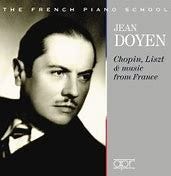

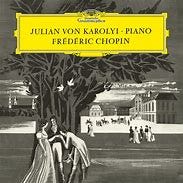
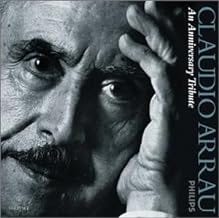
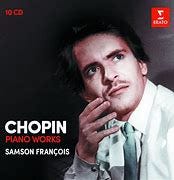
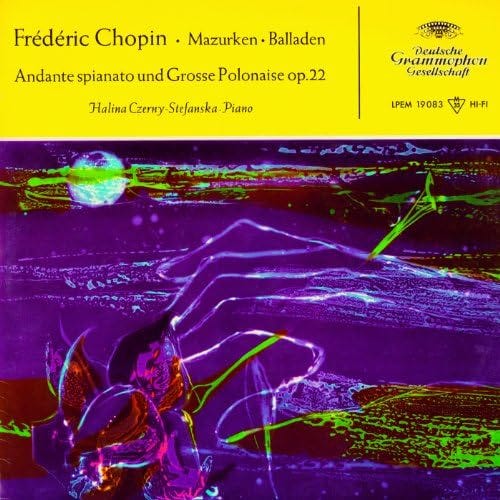
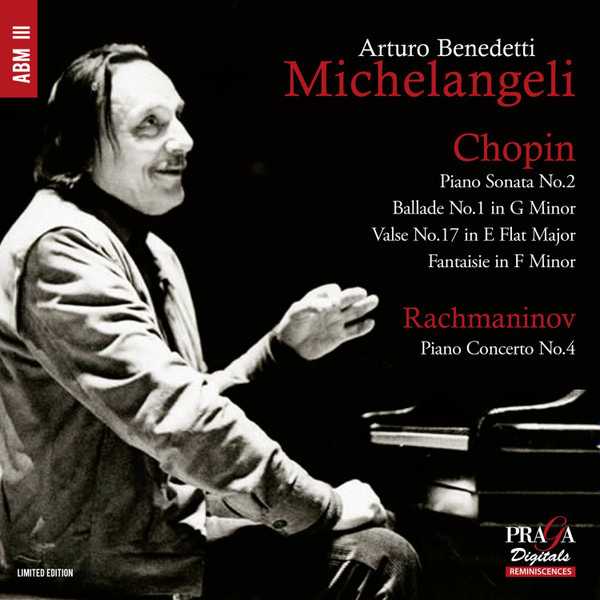
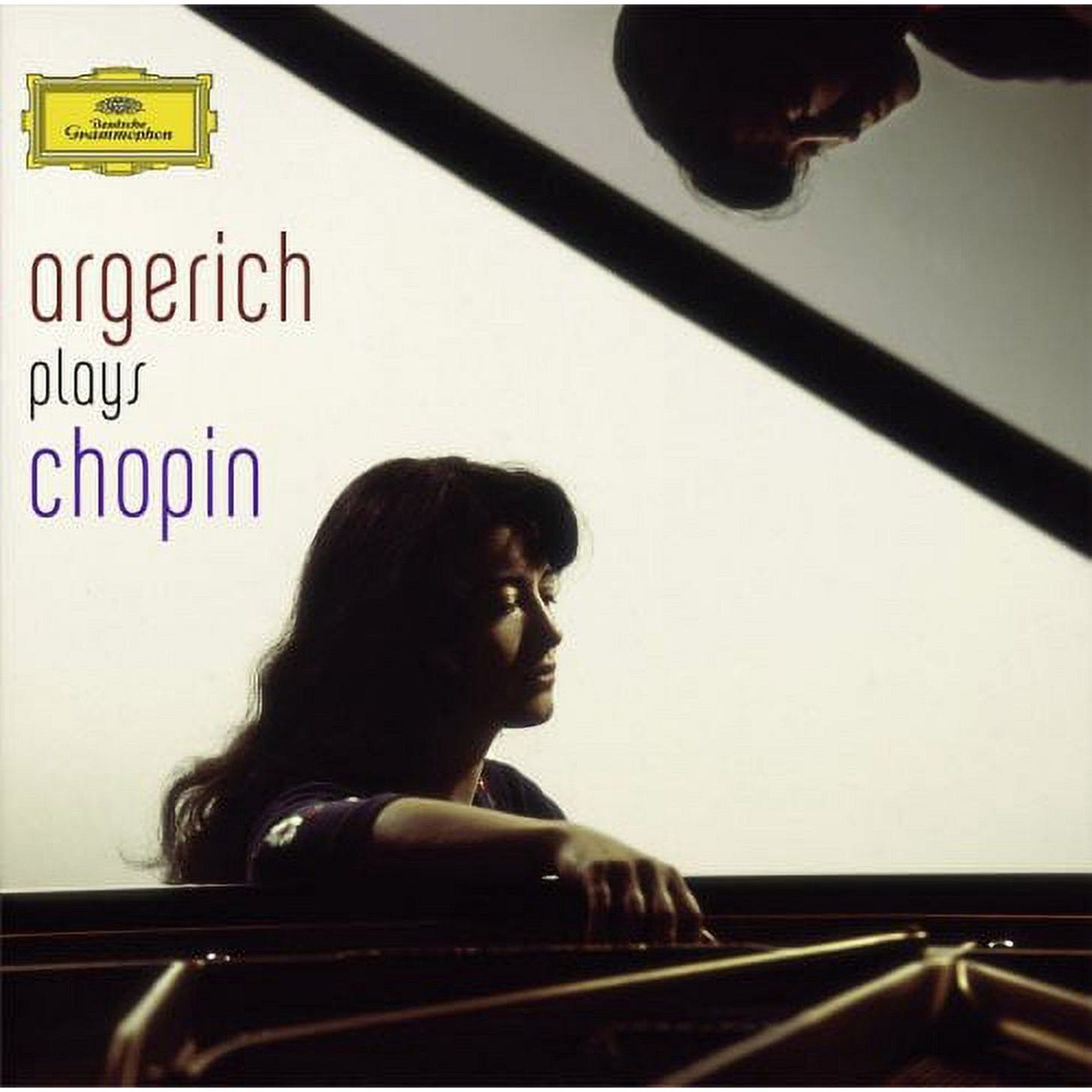
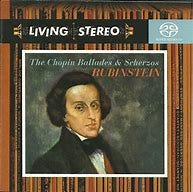
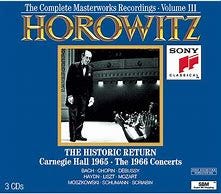

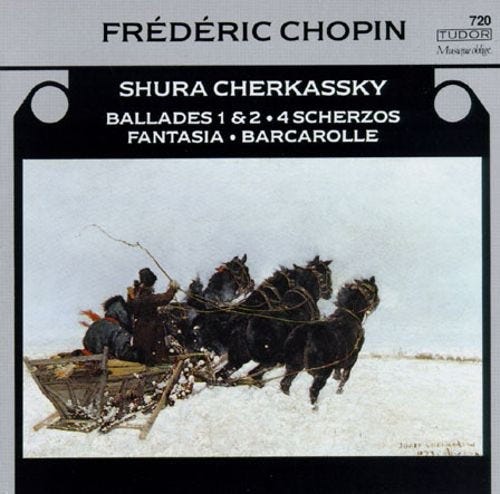
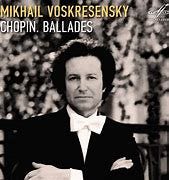


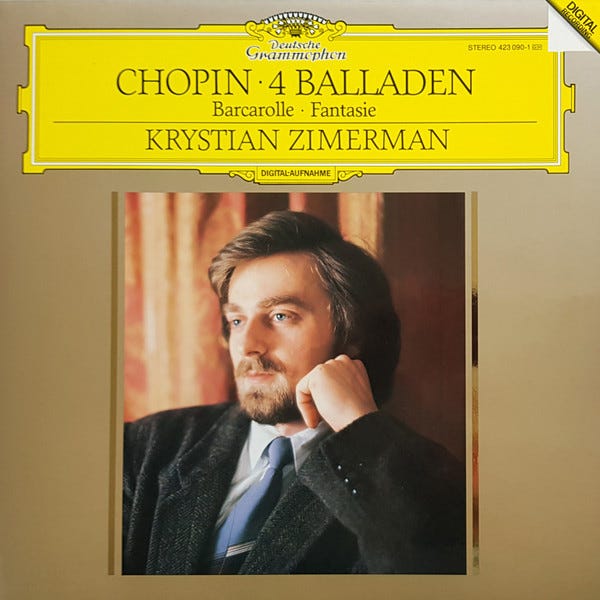



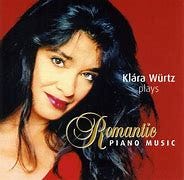

John Buxton: This posting is a keeper.
I haven't heard as many performances as you of the ballade.
Early in my life (circa 1958, ten years old), I heard a recording of much of Josef Hofmann's Golden Jubilee concert on Vinyl from the live, 1938 performance in Carnegie Hall.
Among so many longer pieces (e.g., Chopin's Andante spianato und Grande Polonaise brillante), Hofmann played this ballade.
I found the recording astounding.
Now, of course, I was quite young.
But I still love that performance.
And the performance of Maurizio Pollini.
I am marking the post to read and re-read, so your recommendations can guide informed listening.
Thank you so very much for sharing.